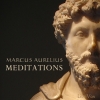
Life, as we all come to realize, is a multifaceted journey with peaks of joy and valleys of pain. Having experienced more than a few cycles of love and heartbreak, I have not only found solace, but also profound guidance in ancient philosophical wisdom. Pairing this with contemporary cognitive behavioral therapy (CBT) and the rejuvenating power of physical activity, and you have a broad and powerful tool that helps you mend a broken heart.
If you’re going through a breakup or some form of heartache, I not only wish you the best on your journey, but hope the guidance below can shed some comfort on your journey.
Stoicism: Embracing Impermanence
You might be asking, what is stoicism? And if you are, you’ve come to the right place. We’ve covered stoicism extensively at The Wise Mind and hope you can put the rest of our content to good use. Nonetheless, to summarise Stoicism, it is an ancient philosophy which stresses the impermanence of life and the importance of focusing on our own agency.
Marcus Aurelius, Seneca, and the Nature of Pain: Marcus Aurelius, the Roman Emperor and Stoic philosopher, penned his thoughts in what is now known as the “Meditations.” Through his writings, he often highlighted the ephemeral nature of life. Heartbreak, when viewed through the lens of Stoicism, becomes a mere blip in the grand tapestry of existence. Another prominent Stoic, Seneca, reminds us that “Difficulties strengthen the mind, as labor does the body.” The pain of a breakup, then, isn’t just a wound; it’s a classroom. Every pang and tear shed can fortify the spirit if viewed with the right perspective.
Understanding Impermanence: The heart of Stoicism is the understanding that all things—pleasures, pains, life, and death—are temporary. This too, the agony of lost love, shall pass. Moreover, Stoics emphasize focusing on elements within our control: our actions, our reactions, and our emotions. External events, including the actions of our ex-partners, are beyond our direct control and should not govern our internal peace.
To implement Stoic teachings in your journey through this heartbreak, I suggest the following:
- Morning Reflection: Begin each day by reminding yourself of the impermanence of life. Recall that joys, sorrows, and even life itself are fleeting. Such reflections can anchor you in the present and prepare you for the day’s challenges.
- Negative Visualization: This is a practice of imagining the loss of things we hold dear (relationships, possessions, health). This isn’t to foster pessimism but to cultivate gratitude for what we have now and to diminish the shock of potential future losses.
- Voluntary Discomfort: Occasionally, engage in minor discomforts willingly, such as taking a cold shower or fasting for a meal. This practice trains the mind to be less perturbed by unforeseen hardships and increases our appreciation for everyday comforts.
- Evening Review: At day’s end, reflect on your actions, decisions, and reactions. Were they in line with Stoic principles? Recognize your accomplishments and identify areas for growth.
Cognitive Behavioural Therapy (CBT): Reframing Heartbreak
CBT, while a modern therapeutic approach, finds echoes in ancient Stoic teachings. Its essence lies in understanding our thought patterns, challenging them, and replacing them with healthier beliefs.
Understanding Automatic Thoughts: After a breakup, it’s almost instinctual to dive into a sea of negative self-talk. “I’ll always be alone,” or “I wasn’t good enough.” These automatic thoughts, as they’re termed in CBT, often go unchecked, leading to unwarranted anguish.
Challenging Negative Narratives: The beauty of CBT lies in its systematic approach to mental wellness. By penning down these automatic thoughts and challenging their validity, one often realizes the disparity between perception and reality. For instance, believing “I’ll never find love again” can be counteracted by recalling past instances of love and connection, thereby proving the irrationality of such a belief.
Practical Application: It’s one thing to understand CBT and another to integrate it into daily life. Start with a journal. Every evening, make it a practice to note down any negative thoughts that surfaced during the day. Challenge each of them, and replace them with a balanced, rational belief. This constant check-and-balance system ensures that emotional upheavals don’t get the better of us.
If Cognitive Behavioural Therapy sounds like something you could implement in your life, here are a few suggestions for exercises:
- Thought Records: Whenever you encounter a negative or distressing thought, jot it down. Next, challenge its validity. What evidence supports it? What contradicts it? This exercise helps in identifying and reframing cognitive distortions.
- Behavioral Experiments: Test the validity of your beliefs. For instance, if you fear rejection, try initiating small conversations with strangers. Often, reality is gentler than our assumptions.
- Worry Time: Instead of constantly ruminating over worries, set aside a specific time each day (say, 20 minutes) where you allow yourself to worry. If worries arise outside of this period, jot them down to address during your designated worry time.
- Exposure Therapy: Gradually expose yourself to situations or thoughts you fear, in controlled and increasing intensities. This desensitizes your anxiety response over time.
Exercise: Physicality as a Path to Healing
The Greeks had a profound understanding of the harmony between the mind and the body. Plato’s adage, “Lack of activity destroys the good condition of every human being,” rings true even today, especially when navigating emotional pain.
Endorphins – Nature’s Antidote to Pain: Physical activity, be it a gentle walk or a strenuous weightlifting session, triggers the release of endorphins. These are neurotransmitters that act as natural painkillers, elevating mood and providing a sense of well-being.
Exercise as Meditation: Beyond the biochemical benefits, exercise can be a form of moving meditation. The rhythmic cadence of a jog or the deep stretches in yoga can center the mind, offering a reprieve from rumination and heartache.
Setting Routine: One of the pitfalls of heartbreak is the void it leaves, often leading to aimlessness. Establishing a fitness routine not only fills this void but also provides structure to the day. The discipline required in maintaining this routine can also spill over into other areas of life, fostering overall growth.
Integrating Philosophy, Therapy, and Physicality
With these three pillars, one can construct a robust strategy to navigate the stormy seas of heartbreak:
- Morning Meditations: Start the day with Stoic contemplations. Let the writings of ancient sages be the guiding light. Recall the impermanence of life and pain, centering yourself in the present.
- Midday Mental Checks: Post lunch, find a quiet moment. Reflect on any negative or irrational beliefs that might have crept into your mind. Using the principles of CBT, challenge them. This keeps the mind in check, preventing emotional avalanches later in the day.
- Evening Exertions: As dusk approaches, let it be a cue for physical activity. Whether it’s a trip to the gym, a home workout, or a serene walk, let your body expel the emotional toxins.
In Conclusion
The road post-breakup is undoubtedly rough, strewn with emotional pitfalls and moments of despair. However, with the enduring wisdom of Stoicism, the practicality of CBT, and the invigorating power of exercise, one can not only traverse this challenging terrain but also emerge stronger, wiser, and more resilient.
Marcus Aurelius once stated, “The obstacle is the way.” This phrase isn’t merely about identifying problems but also recognizing them as opportunities for growth. Your heartbreak, despite its current sting, is also your compass, pointing toward personal evolution and deeper self-awareness. Embrace the journey, lean into the teachings, and watch as today’s pain becomes tomorrow’s stepping stone.










